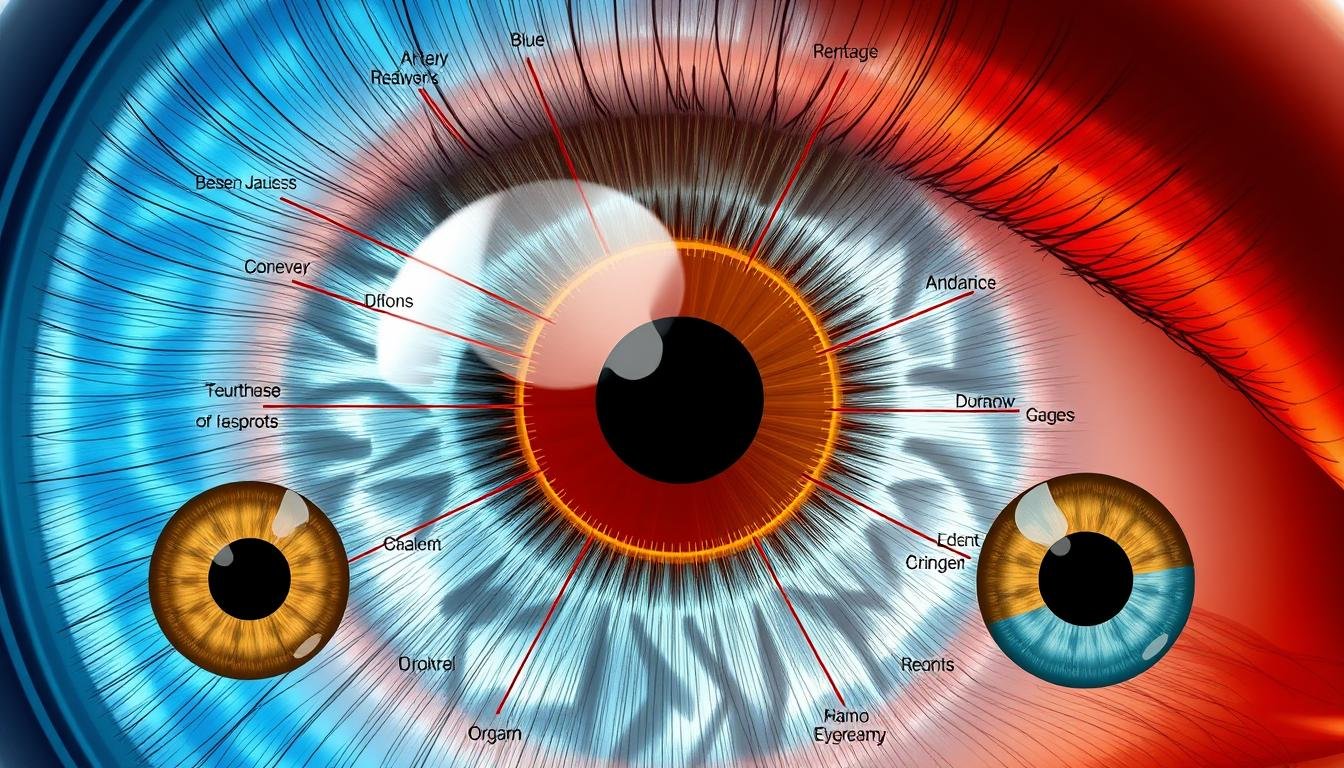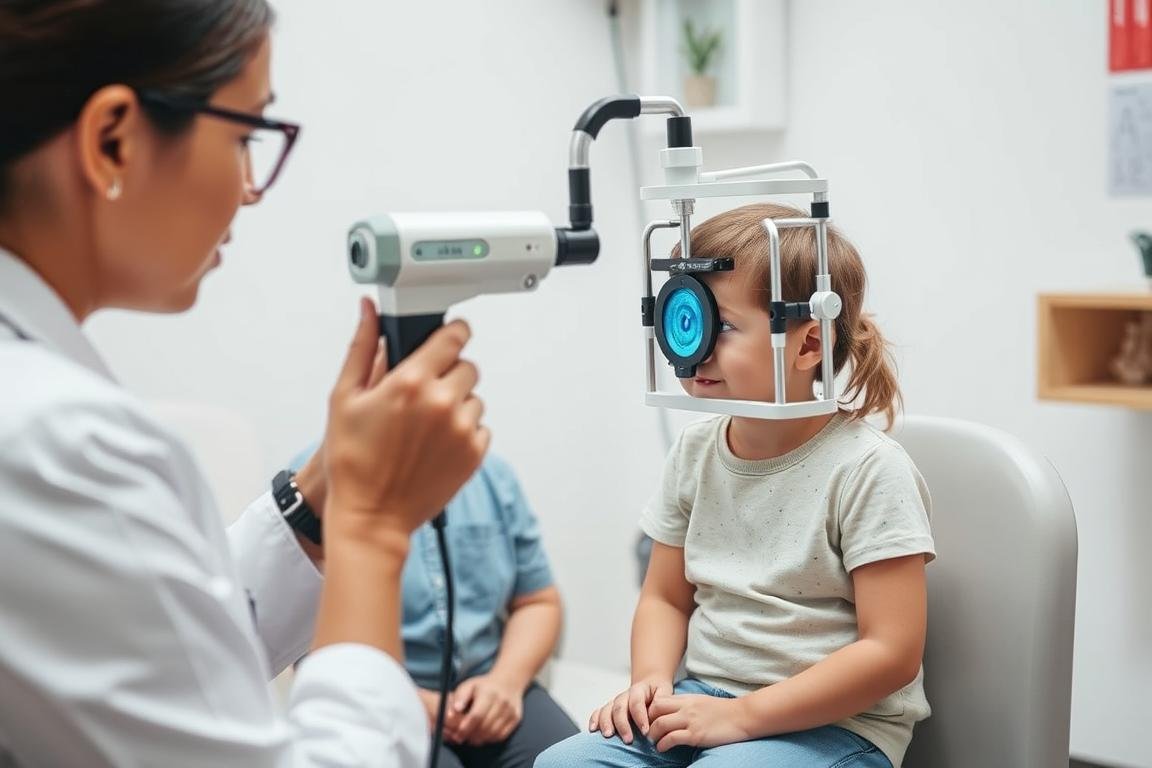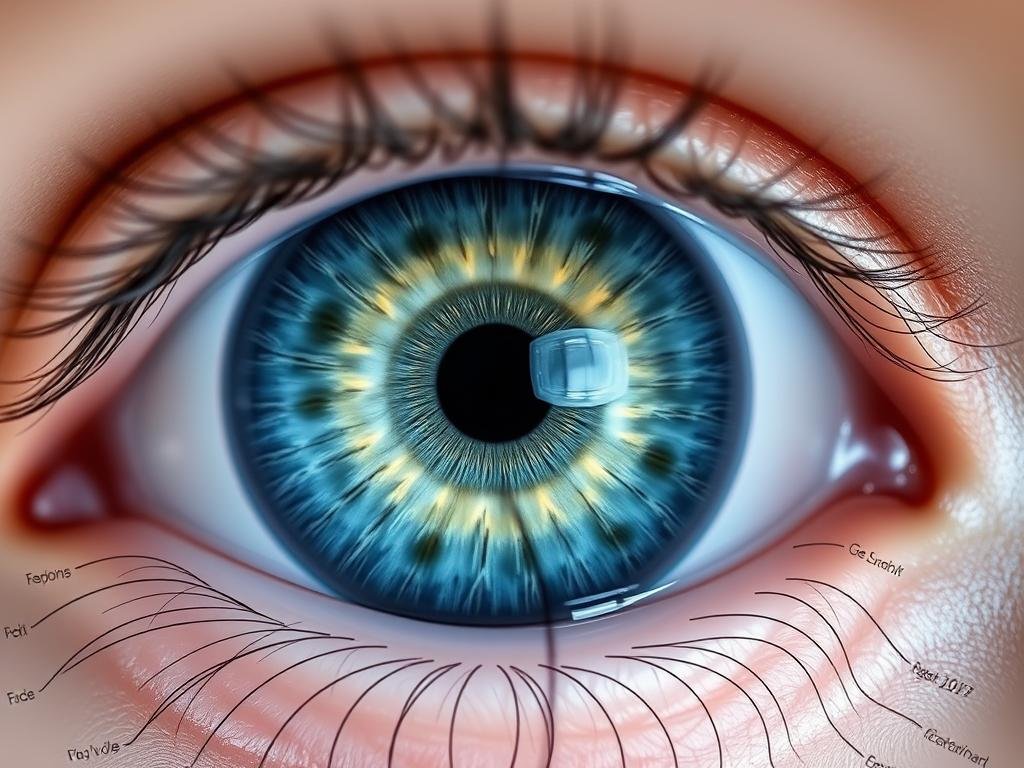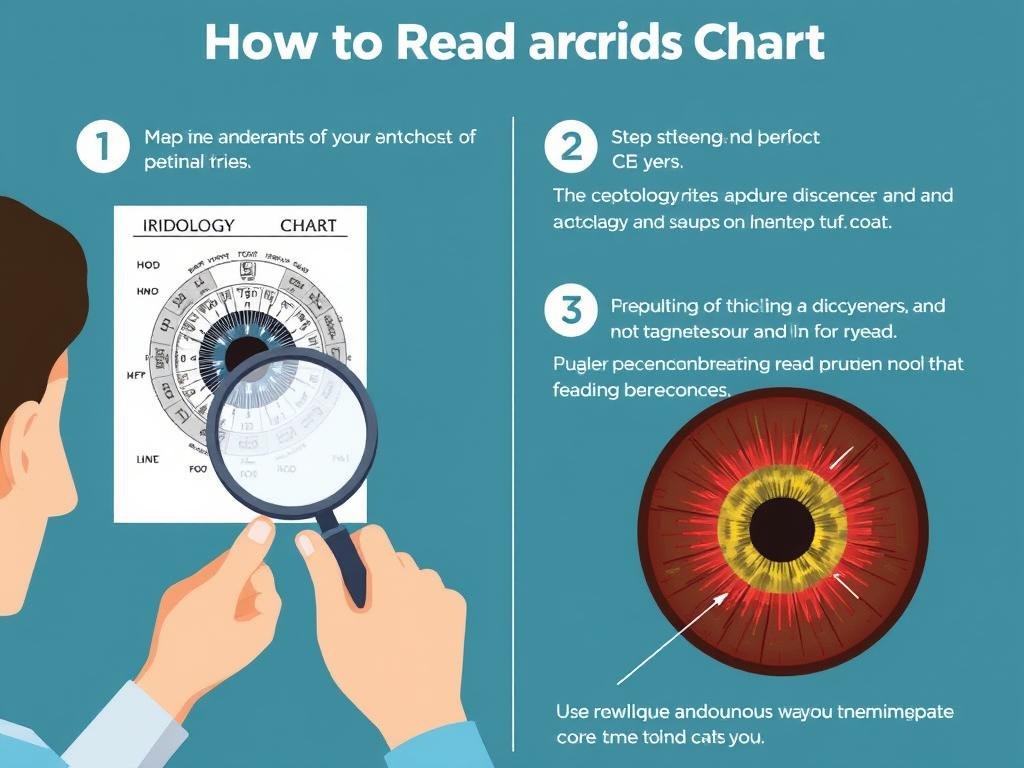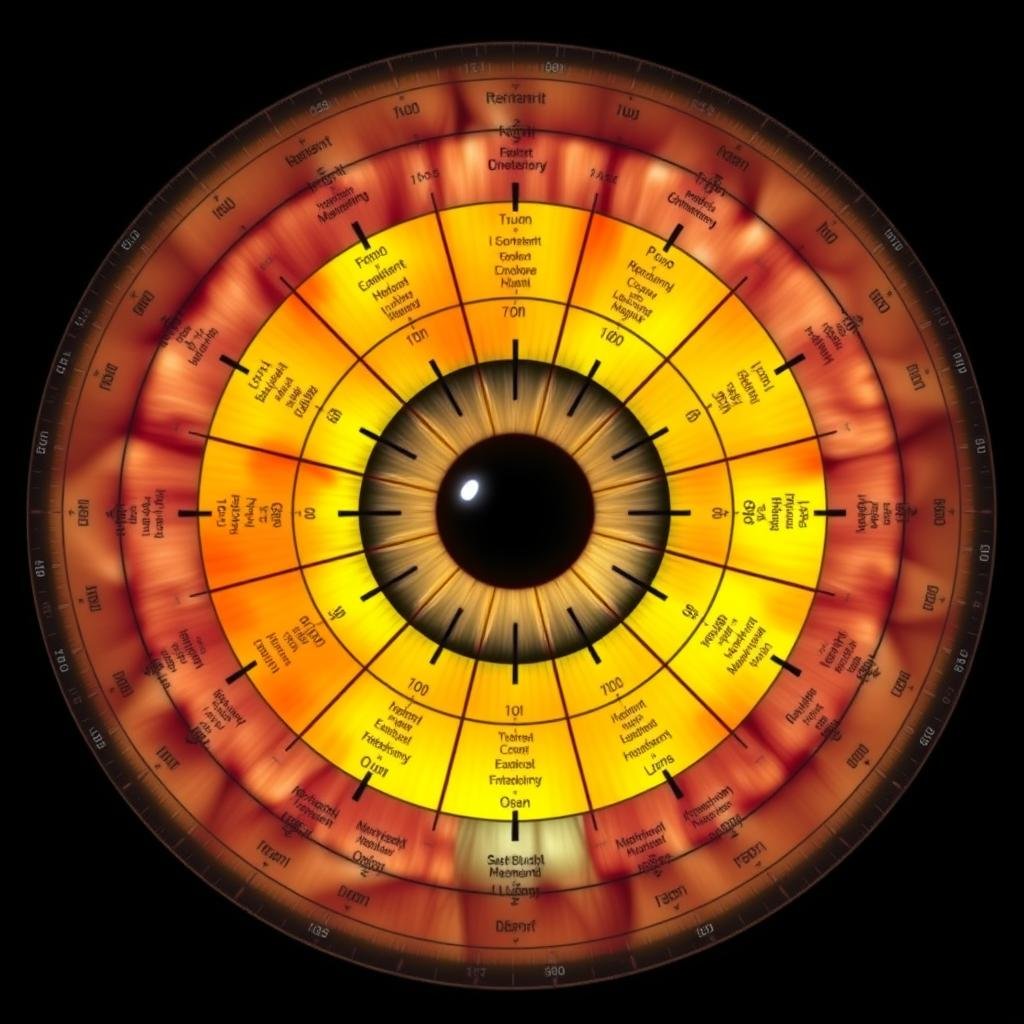The Diagrama de iridologie serves as a fascinating window into your family’s health. This ancient diagnostic tool maps the iris—the colored part of the eye—to various organs and systems throughout the body. For families concerned with children’s wellness, iridology offers a non-invasive method to monitor health patterns and potential issues before they develop into serious conditions. Through careful analysis of iris patterns, colors, and markings, practitioners can identify areas of strength and weakness in a child’s developing body, providing parents with valuable insights for preventative care.
Understanding the Iridology Chart
Un Diagrama de iridologie serves as a detailed map that divides the iris into zones, each corresponding to different organs and systems within the body. These charts have evolved over centuries of observation and documentation, becoming increasingly refined as practitioners noted patterns between iris markings and health conditions. Today’s charts provide comprehensive guidance for analyzing the intricate details visible in the colored part of the eye.
History of Iridology Chart Diagnosis
The foundations of modern iridology trace back to the 19th century when Hungarian physician Dr. Ignatz von Peczely noticed patterns in his patients’ irises that corresponded with their health conditions. Legend states that as a child, he observed changes in an owl’s iris after the bird suffered a broken leg. This observation sparked his lifelong study of iris patterns and their relationship to health, culminating in the first comprehensive diagramă de iridologie in 1881.
Throughout the 20th century, practitioners like Dr. Bernard Jensen further developed and refined these charts, creating more detailed mappings that are still used today. The evolution of photography and digital imaging has allowed for even more precise analysis of iris patterns, making diagrame de iridologie more accessible and applicable for family health monitoring.

Key Sections in a Standard Iridology Chart
A standard diagramă de iridologie divides the iris into multiple zones radiating from the pupil to the outer edge. These zones are typically organized as follows:
Right Iris Zones
- Brain and nervous system (top section)
- Lymphatic system (upper right)
- Respiratory system (right middle)
- Liver and gallbladder (lower right)
- Large intestine (bottom section)
- Spine and skeletal system (inner ring)
Left Iris Zones
- Heart and circulatory system (top left)
- Spleen (upper left)
- Stomach and digestive system (left middle)
- Kidneys and adrenals (lower left)
- Small intestine (bottom section)
- Lymphatic system (outer ring)
Children’s diagrame de iridologie may show different patterns than adults, as their bodies are still developing. The clarity and color of a child’s iris often reflect their inherent constitution and potential health tendencies rather than accumulated health issues.
While standard eye exams focus on vision acuity and eye health, diagramă de iridologie analysis examines the iris for insights about the entire body. Here are the key differences:
| Aspect | Standard Eye Exam | Diagrama de iridologie Analiză |
| Primary Focus | Vision quality and eye diseases | Whole-body health assessment |
| Equipment Used | Ophthalmoscope, vision charts, tonometer | Specialized iris camera, magnification tools |
| What It Detects | Refractive errors, glaucoma, cataracts | Organ stress, inflammation, constitutional strengths/weaknesses |
| Medical Recognition | Universally accepted in conventional medicine | Considered complementary/alternative medicine |
| Frequency Needed | Annually or bi-annually | Can be done quarterly for tracking health changes |
Discover Your Family’s Iris Health Patterns
Our certified iridologists specialize in family and pediatric iris analysis. Get a comprehensive assessment of your child’s constitutional strengths and potential health tendencies.
Schedule a Family Consultation
Iridology Chart Analysis for Children
Children’s irises offer unique insights into their developing bodies and constitutional health. The diagramă de iridologie for children focuses on developmental patterns and inherited tendencies rather than accumulated health issues typically seen in adults. Understanding these patterns early can help parents make informed decisions about nutrition, activities, and preventative health measures.

Age-Specific Chart Interpretations
The interpretation of an diagramă de iridologie varies significantly based on a child’s age. Here’s how practitioners adjust their analysis through different developmental stages:
Infants (0-2 years)
Infant irises primarily reflect inherited constitutional patterns. The diagramă de iridologie reading focuses on:
- Genetic predispositions
- Digestive system development
- Immune system strength
- Nervous system sensitivity
Young Children (3-7 years)
As children grow, their diagramă de iridologie readings begin to show:
- Early stress patterns
- Developing allergic tendencies
- Lymphatic system efficiency
- Respiratory system resilience
Older Children (8-12 years)
Pre-adolescent diagramă de iridologie analysis reveals:
- Hormonal system development
- Modele de răspuns la stres
- Digestive efficiency
- Early signs of inherited tendencies
Common Childhood Conditions Revealed Through Iridology Chart
While an diagramă de iridologie cannot diagnose specific diseases, it can identify areas of potential weakness or stress that may correlate with common childhood conditions:
| Semnul Iris | Area on Iridology Chart | Potential Health Consideration |
| White rings around pupil | Digestive zone | Food sensitivities, digestive stress |
| Dark spots in upper regions | Respiratory zone | Respiratory sensitivity, potential allergies |
| Radial lines in mid-zone | Sistemul nervos | Stress response, sleep issues |
| Yellowish discoloration | Liver/gallbladder zone | Liver stress, detoxification challenges |
| Flecks in lower quadrant | Sistem limfatic | Immune system support needed |

Case Study: Tracking Development via Iridology Chart
Eight-year-old Maya’s parents sought iridology consultation after she experienced recurring respiratory infections. The diagramă de iridologie analysis revealed specific markings in her respiratory and lymphatic zones. Based on these findings, her parents implemented dietary changes and immune-supporting herbs. Follow-up iris analysis six months later showed noticeable improvements in these areas, correlating with fewer respiratory issues.
“The iridology chart reading gave us insights we couldn’t get from conventional tests. We could actually see the areas of Maya’s body that needed support, and track the improvements as we made changes to her diet and lifestyle.”
– Sarah M., parent of 8-year-old patient
Track Your Child’s Health Development
Our pediatric iridology program includes baseline analysis and quarterly follow-ups to monitor your child’s health progress and development patterns.
Learn About Our Pediatric Program
Family Applications of Iridology Chart Reading
The diagramă de iridologie offers unique benefits when applied across family members, revealing inherited patterns and allowing for personalized health approaches for each family member. This family-centered approach to iridology provides a comprehensive view of health tendencies that may run through generations.

Creating Family Health Baselines
Establishing baseline diagramă de iridologie readings for each family member provides valuable reference points for tracking health changes over time. These baselines serve several important purposes:
- Constitutional Assessment: Identifying inherent strengths and weaknesses in each family member’s physical makeup
- Health Trajectory Mapping: Establishing starting points to measure progress or changes in health patterns
- Personalized Health Strategies: Developing targeted approaches based on each person’s unique iris patterns
- Early Intervention Opportunities: Recognizing potential health tendencies before they manifest as symptoms
Many families schedule annual diagramă de iridologie readings to update these baselines and track changes, particularly during important developmental stages for children.
Preventative Care Through Iridology Chart Patterns
One of the most valuable applications of family diagramă de iridologie analysis is preventative health planning. By identifying potential weakness areas in the iris, families can implement targeted strategies:
Suport nutrițional
When the diagramă de iridologie shows potential digestive weaknesses, families can adjust diets to include:
- Specific nutrients that support weak organ systems
- Anti-inflammatory foods for areas showing inflammation
- Elimination of potential trigger foods
Modificări ale stilului de viață
Iris patterns indicating stress in certain body systems may suggest lifestyle changes:
- Stress management techniques for nervous system support
- Exercise protocols for lymphatic or circulatory patterns
- Sleep optimization for adrenal or nervous system signs
Environmental Adjustments
When the diagramă de iridologie reveals sensitivity patterns:
- Reduction of household toxins and allergens
- Air and water filtration systems
- Creation of low-EMF zones for sensitive family members
Multi-Generational Iridology Chart Comparisons
Perhaps the most fascinating aspect of family iridology is comparing diagrame de iridologie across generations. These comparisons often reveal:

Multi-generational iridology comparison showing inherited iris patterns across three generations
- Inherited Patterns: Similar markings that appear in parents and children, indicating genetic tendencies
- Constitutional Strengths: Positive traits that pass through family lines
- Health Tendencies: Potential vulnerability patterns that may require proactive attention
- Epigenetic Changes: Differences in similar patterns that suggest environmental or lifestyle influences
These multi-generational insights help families understand which health tendencies might be inherited and which may be influenced by lifestyle and environment, allowing for more targeted preventative approaches.
Family Iridology Success Story
The Martinez family discovered through multi-generational diagramă de iridologie analysis that they shared a pattern indicating liver sensitivity. Three generations showed similar markings in the liver zone of their irises. Armed with this knowledge, they implemented a family-wide liver support protocol including dietary changes and herbal supplements. Within six months, several family members reported improvements in energy, digestion, and skin health.
How to Read Your Iridology Chart (Step-by-Step Guide)
While professional analysis provides the most comprehensive insights, families can learn basic diagramă de iridologie reading skills to monitor certain aspects of health at home. This step-by-step guide will help you begin understanding the fundamentals of iris analysis.

Equipment Needed for Home Analysis
To begin exploring basic diagramă de iridologie reading at home, you’ll need several key items:
Essential Equipment
- Magnifying glass (10x minimum): For close examination of iris details
- Good lighting: Natural daylight or full-spectrum lighting works best
- Basic iridology chart: Reference guide showing iris zones
- Notebook: For recording observations and changes over time
Optional Advanced Tools
- Digital camera with macro lens: For capturing detailed iris images
- Iris photography app: Several smartphone apps now offer iris magnification
- Iridology software: Programs that help map and analyze iris patterns
- Color-corrected lighting: For accurate color assessment
Identifying Zones in Your Iridology Chart
The diagramă de iridologie divides the iris into zones that correspond to different body systems. Here’s how to begin identifying these zones:
- Orient the chart: Think of the iris as a clock face. The nose is at 3 o’clock for the right eye and 9 o’clock for the left eye.
- Locate the pupil: The center of the iris is your starting point. The area immediately surrounding the pupil relates to the digestive system.
- Identify the collarette: This is the jagged ring that divides the iris into inner and outer zones, representing the autonomic nervous system.
- Map the quadrants: The top quadrants generally relate to the head, brain, and upper body. The bottom quadrants correspond to the lower body and elimination systems.
- Note the iris edge: The outermost edge of the iris relates to the skin, lymphatic system, and circulation.

Reference iridology chart showing major organ zones for home analysis
Când să consultați un profesionist
While home diagramă de iridologie reading can be educational, certain situations warrant professional consultation:
Signs You Can Monitor at Home
- General iris color and clarity changes
- Basic fiber patterns and density
- Obvious markings or discolorations
- Changes after implementing health protocols
When to Seek Professional Analysis
- New or changing spots or markings
- Significant color changes in specific zones
- For baseline assessment and proper interpretation
- When correlating with specific health concerns
- For children’s developmental assessment
Remember that diagramă de iridologie reading is a complementary health tool and should be used alongside, not instead of, conventional medical care. Professional iridologists have years of training in pattern recognition and interpretation that goes far beyond basic home analysis.
Start Your Family’s Iridology Journey
Ready to discover what your family’s eyes reveal about your health? Our comprehensive family iridology package includes individual assessments for up to 4 family members, personalized health recommendations, and a follow-up consultation.
Get Your Family Iridology Package
Întrebări frecvente despre graficele de iridologie
How accurate is an Iridology Chart for assessing children’s health?
The Diagrama de iridologie can provide valuable insights into a child’s constitutional tendencies and potential areas of weakness. While not diagnostic in the conventional medical sense, many practitioners find it particularly useful for children as it can reveal inherited patterns and developing systems that may need support. The accuracy depends largely on the skill of the practitioner and should be considered one tool in a comprehensive health approach rather than a standalone diagnostic method.
Can Iridology Chart reading replace regular medical check-ups for my family?
No, Diagrama de iridologie analysis should complement, not replace, conventional medical care. While iridology can provide insights into potential health tendencies and constitutional patterns, it doesn’t diagnose specific diseases or replace necessary medical screenings and check-ups. The most effective approach is integrative—using iridology alongside regular medical care for a more complete picture of your family’s health.
How often should my family have Iridology Chart readings done?
For families using Diagrama de iridologie analysis as part of their health monitoring, a common approach is:
- Baseline reading: Initial comprehensive analysis for each family member
- Children: Every 6-12 months during developmental years
- Adults: Annually for general monitoring
- During health changes: When implementing new health protocols or experiencing significant health shifts
More frequent readings may be beneficial when actively addressing specific health concerns or during rapid developmental phases in children.

Embracing Family Health Through Iridology
The diagramă de iridologie offers families a unique window into their collective and individual health patterns. By understanding the constitutional tendencies, strengths, and potential areas of concern visible in the iris, parents can take a proactive approach to their children’s wellbeing. While iridology should always complement rather than replace conventional medical care, many families find that this ancient practice provides valuable insights that help them make informed health decisions.
Whether you’re just beginning to explore iridology or looking to deepen your understanding of this fascinating health tool, remember that the eyes truly can be windows to your family’s health. Consider scheduling a professional consultation to establish baseline readings for your family members and discover what your irises reveal about your collective health journey.
Begin Your Family’s Iridology Journey Today
Discover the insights hidden in your family’s eyes with our comprehensive iridology services. Our certified practitioners specialize in pediatric and family iridology analysis.
Schedule Your Family Consultation

